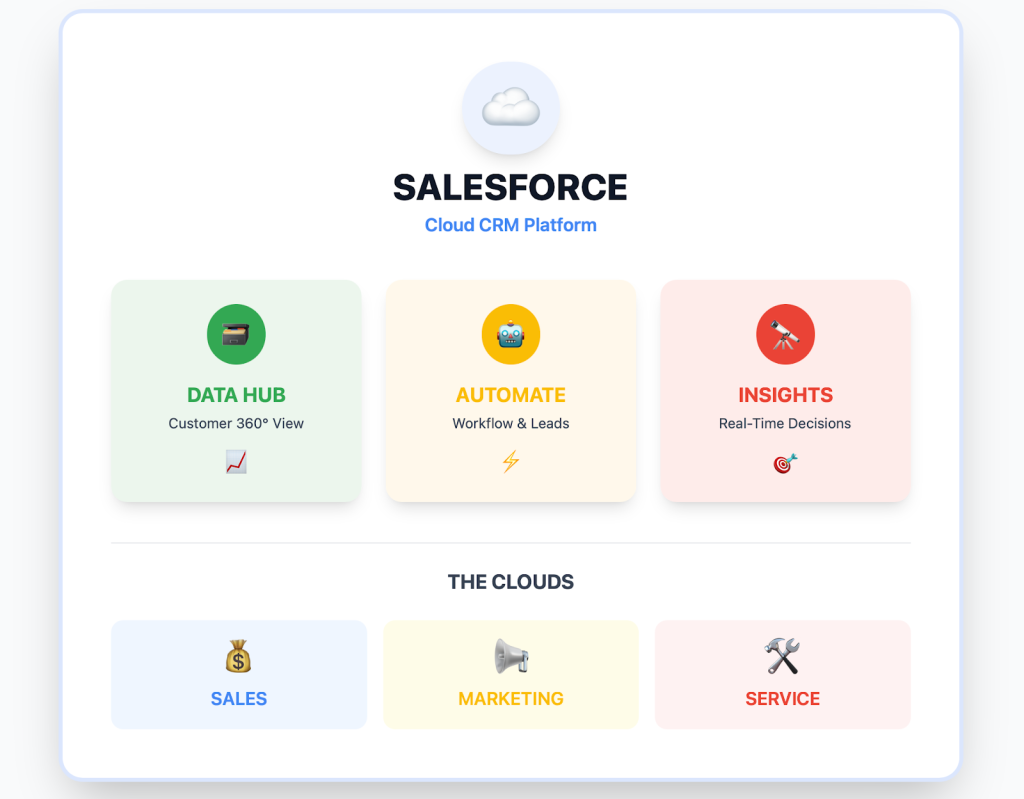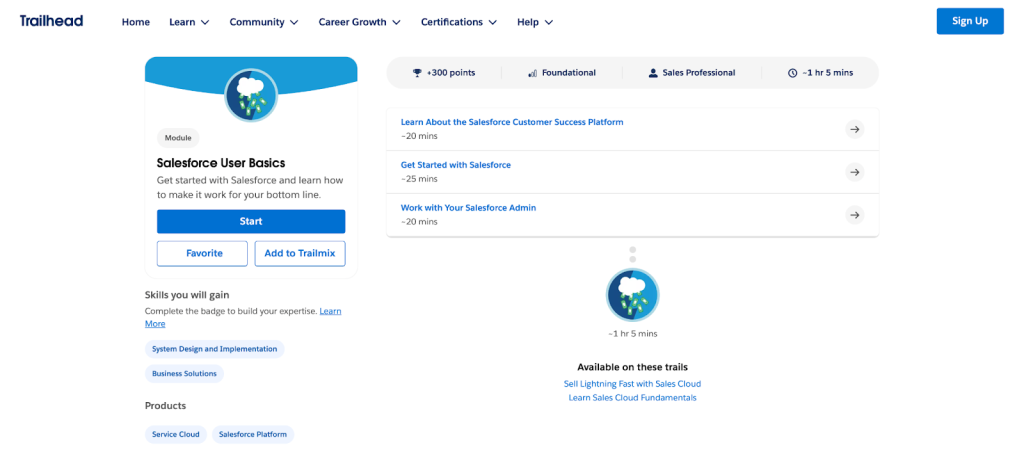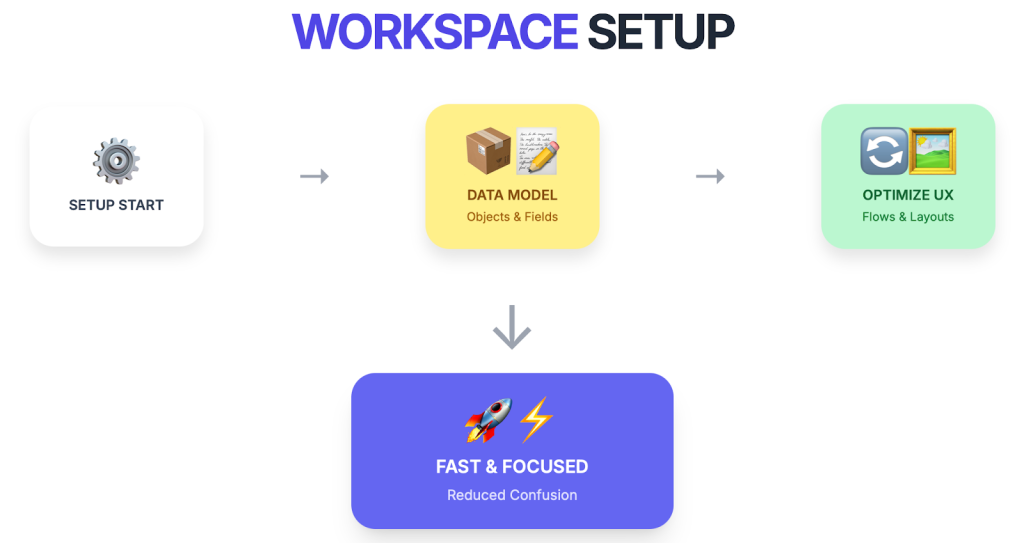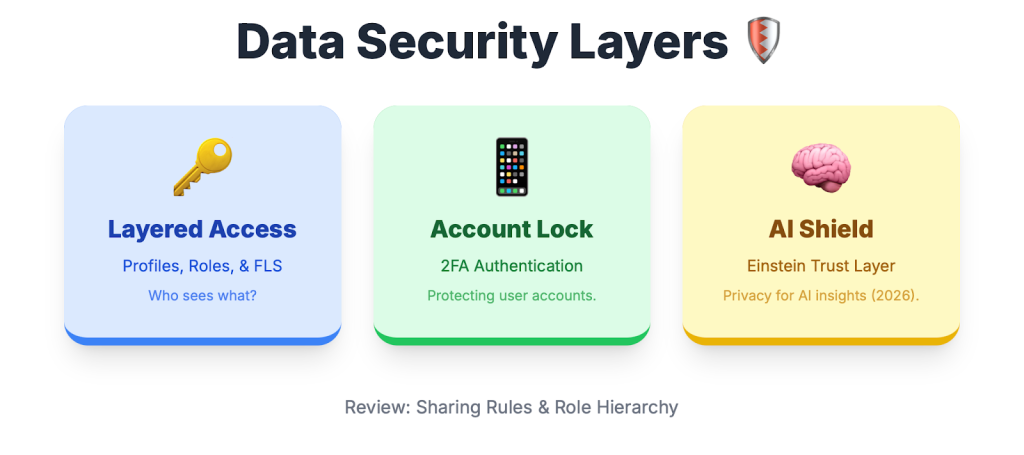
Salesforce continues to lead the CRM market as 2026 approaches, offering a unified platform for sales, marketing, and customer service. Its latest upgrades (Agentforce 360, Data 360, and Slack integration) make managing customer relationships and business processes faster and more intelligent.
In this guide, we’ll walk you through how to use Salesforce step by step so you can build the right skills, streamline workflows, and make the most of its AI-driven features.
What Is Salesforce?
Salesforce is a cloud-based customer relationship management (CRM) platform that helps businesses manage sales, marketing, and service in one place. It organizes customer data, automates tasks, and provides real-time insights for better decision-making.
Companies use Salesforce to track leads, monitor opportunities, and strengthen customer relationships. For example, Sales Cloud supports deal management, while Service Cloud helps teams handle support cases efficiently. The platform also connects with Experience Cloud for customer portals and Marketing Cloud for campaign automation.
Many organizations partner with Salesforce consultants like Think Beyond to customize solutions for their business goals. Learn more at: https://thinkbeyond.cloud/blog/top-salesforce-partners-in-poland/

Why Is Salesforce So Popular?
Salesforce stands out as one of the most widely used CRM systems because it adapts to different business needs.
Its user-friendly design, automation tools, and cloud-based software make it easy to manage customer relationships at scale. Plus, the platform grows with your company, from startups to enterprises, and supports integrations through AppExchange.
Here are the main benefits of Salesforce:
- Flexible customization for unique workflows and industries
- Centralized customer data for a complete 360-degree view
- Built-in automation that saves time and improves efficiency
- Regular feature updates that keep businesses competitive
- Strong community support and learning through Salesforce Trailhead
Salesforce Step-by-Step Guide
So, how to use Salesforce?
We got you covered! Each step below covers a specific part of setup and daily use, from signing up to automating workflows.
Step 1: Sign up and access the platform
Start with creating a free Salesforce Developer Edition account on the official website. This gives you full access to the Salesforce CRM environment without setup costs.
After registering, log in using a web browser to access the Lightning Experience – the main interface where most 2026 tools will operate. You can switch to Salesforce Classic if your company still uses older layouts or workflows.
The Lightning interface offers faster navigation, better customization, and access to AI-driven features such as Agentforce 360. For example, you can automate lead tracking or customer interactions right after logging in.
Step 2: Learn the basics
Salesforce provides structured training and certifications through its Trailhead platform, helping new users understand the fundamentals of customer relationship management. Start with the “Salesforce User Basics” trail, then move to “Admin Beginner” for configuration or “Developer Beginner” for coding and automation.

Salesforce User Basics navigation menu
These guided modules will teach you how to manage records, use dashboards, and automate sales or service tasks. Completing these trails will build practical Salesforce skills and help you get comfortable with the platform’s core functionalities before moving to advanced tools.
Step 3: Understand CRM core objects
Every Salesforce system relies on standard objects that structure customer data and business operations. You’ll work mainly with:
- Accounts – companies or organizations you do business with.
- Contacts – individuals linked to those accounts.
- Opportunities – sales deals you want to track and close.
- Cases – customer service or support requests.
Knowing how these objects relate helps you manage customer relationships efficiently. For example, linking Contacts to Accounts allows teams to track communications and sales activity in one view.
This relationship model creates centralized data across departments, improving collaboration and accuracy. Once you understand these objects, you can start customizing them for your company’s specific workflows or reporting needs.
Step 4: Set up your workspace
Start configuring Salesforce CRM for your team through the Setup menu. Create a custom App using the App Manager and add Objects that match your business model. Define Fields, such as text, date, or picklist values, to capture specific customer data.

Use Record Types to differentiate workflows – for example, B2B and B2C sales processes. Also, adjust Page Layouts to display only the fields your team needs. This structure will help users manage information quickly and reduce confusion when handling leads or opportunities.
Step 5: Automate processes with AI
Automation plays a major role in Salesforce’s 2026 release. Agentforce 360 connects with Data 360 to streamline repetitive tasks and improve customer interactions. Use Flow Builder to create automated sequences for lead routing, task assignments, or email notifications.
In other words, you can define rules that trigger actions when a record changes or meets certain conditions. For example, if a new lead reaches a specific score, the system can assign it to a sales representative automatically. This helps teams save time and focus on customer engagement instead of manual updates.
Step 6: Build reports and dashboards
Salesforce offers advanced reporting tools that help visualize company performance. You can create Reports that track sales revenue, open cases, or marketing efforts. Dashboards turn this data into visual charts and tables for easier analysis.
Einstein Analytics enhances these dashboards with predictive insights, allowing you to identify patterns and forecast outcomes. For example, a sales team can analyze conversion rates across different campaigns and adjust their strategy in real time. These analytics features give every department a clear view of progress and areas that need improvement.
Step 7: Collaborate through Slack
Salesforce integrates directly with Slack to support real-time collaboration between teams. Connect your Salesforce CRM workspace to Slack channels so users can access records, share updates, and discuss sales opportunities without switching platforms. For example, you can create a #sales-updates channel to track deals or a #support channel for case progress.
Managers can post performance summaries, assign tasks, or comment on leads instantly. This integration improves communication and speeds up decision-making across departments. It also helps employees stay informed about customer interactions, project timelines, and shared goals.
Step 8: Manage data security and permissions
Data security in Salesforce depends on Profiles, Roles, and Field-Level Security. Each user receives specific permissions to access, edit, or view customer information. Use Two-Factor Authentication (2FA) to protect accounts and limit exposure to unauthorized access.

The Einstein Trust Layer, introduced in 2026, will add another layer of protection for AI-generated insights, keeping them aligned with privacy and compliance standards.
Main security settings for you to review:
- Profile and Role Hierarchies
- Field-Level Security for sensitive information
- Two-Factor Authentication for user accounts
- Data sharing rules across departments
Step 9: Explore specialized suites
Salesforce offers tailored suites for different company sizes and needs. The Starter Suite combines basic sales, marketing, and service tools in one package. While the Pro Suite adds advanced automation, analytics, and integration options for larger teams.
Both versions include pre-built templates and workflows that simplify setup. Choosing the right suite will help your team scale operations and work more efficiently.
Step 10: Continue learning
Last but not least, keep improving your Salesforce skills through continuous learning. The platform evolves quickly, so staying current helps you use new tools effectively.
Explore Trailhead modules to advance from beginner to administrator or developer levels. Join Salesforce user groups to exchange insights and solutions with other professionals. Follow release notes such as Winter ’26 to learn about updates to Agentforce 360, Data 360, and analytics tools.
After all, regular learning is what keeps your team efficient and your system up to date!
Common Beginner Mistakes to Avoid
New Salesforce users often make simple errors that limit productivity or cause data inconsistencies.
The most common issues relate to poor configuration, limited training, and lack of data management practices. Avoiding these mistakes helps you maintain an efficient Salesforce CRM setup.
Common pitfalls to be aware of:
- Over-customizing objects or workflows without clear business goals
- Ignoring data quality, leading to duplicate or outdated records
- Granting too many permissions to new users
- Skipping Trailhead training and missing new feature updates
- Failing to test automation before applying it to live data
Final Thoughts
Salesforce in 2026 gives businesses an advanced, AI-driven platform to manage customer relationships and data across sales, marketing, and service. Focusing on automation, collaboration, and continuous learning helps teams stay efficient and competitive.
To summarize:
- Use Trailhead to build your Salesforce skills and certifications
- Automate repetitive tasks with Agentforce 360 and Flow Builder
- Keep customer data accurate and secure through proper permissions
- Collaborate using Slack and shared dashboards
- Follow each seasonal release to apply new features
Good luck!
Frequently Asked Questions (FAQs)
1. What is Salesforce and how do you use it?
Salesforce is a cloud-based customer relationship management (CRM) platform used to manage sales, marketing, and service operations. You use Salesforce to track leads, store customer data, automate tasks, and analyze business performance. It connects departments such as sales, support, and marketing in one centralized system. Users access it through a web browser or mobile app to create records, build reports, and monitor customer interactions.
2. Is Salesforce good for beginners?
Salesforce is beginner-friendly due to its guided learning platform, Trailhead. Users can start with Salesforce User Basics, then move to more advanced trails like Admin Beginner or Developer Beginner. The interface, Lightning Experience, offers drag-and-drop tools for customizing layouts and workflows without coding. Beginners can practice safely in the Salesforce Developer Edition, which mirrors real business environments.
3. Can I teach myself Salesforce?
Yes. Salesforce provides self-paced training through Trailhead and the Salesforce Help portal. You can learn how to configure CRM features, manage data, and automate business processes without formal classes. Many learners also join Salesforce communities and forums to exchange best practices. Completing Trailhead modules and earning badges builds practical Salesforce skills that apply directly to work environments.
4. What are the main features of Salesforce?
Salesforce includes several core products: Sales Cloud for deal management, Service Cloud for customer support, and Marketing Cloud for campaign automation. Data Cloud (previously Customer Data Platform) consolidates customer data for analytics and personalization. Experience Cloud supports portals and self-service sites. Additional tools such as Flow Builder and Einstein Analytics help automate workflows and predict trends across customer relationships.
5. How does Salesforce improve customer service?
Salesforce improves customer service through automation, centralized data, and AI insights. Service Cloud allows agents to track cases, respond faster, and manage customer interactions across channels. Tools like Agentforce 360 and Einstein Copilot suggest next steps or auto-generate responses. With all customer information stored in one system, support teams gain a full view of customer needs, reducing response times and improving satisfaction.
6. How long does it take to learn Salesforce?
Most beginners can grasp Salesforce basics within a few weeks through daily learning on Trailhead. Reaching an intermediate level, such as preparing for the Salesforce Administrator certification, often takes two to three months of consistent practice. Learning times vary depending on goals—administrators, developers, and consultants each focus on different Salesforce modules and tools.

